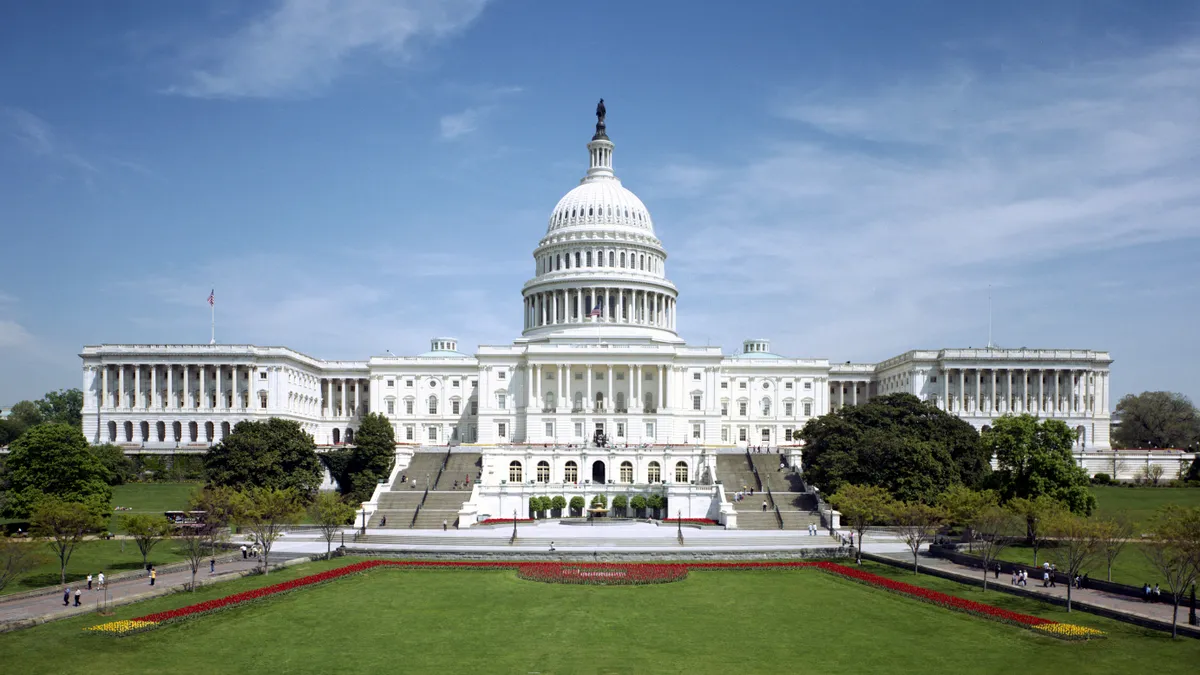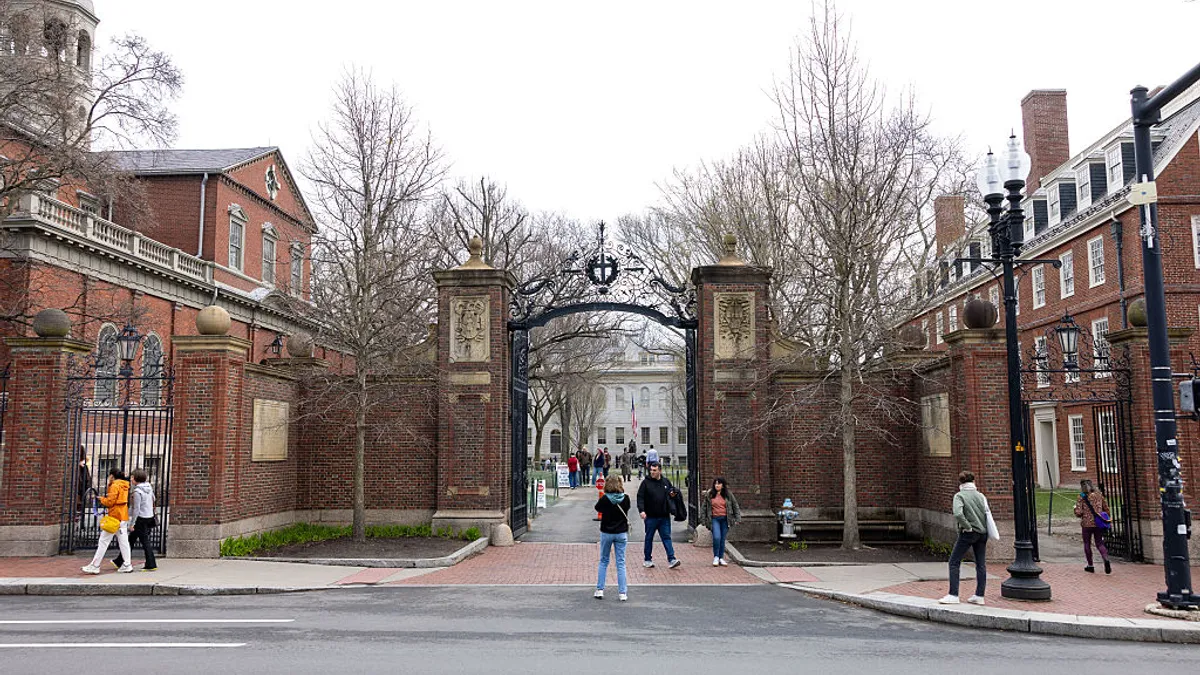Editor's note: This is the second article in a three-part series about the current and future state of student employment on college campuses. Read the first article here and the second article here.
For more than half a century, the Federal Work-Study (FWS) program has plugged along, dutifully providing hundreds of thousands of students each year with jobs while colleges benefit from their subsidized labor.
Despite its scale, critics say the program isn't accomplishing at least two of its mandates: helping low-income students afford college and offering positions that match their academic and career goals.
Although the $1 billion in funding for FWS each year is relatively small compared to the $28.2 billion spent on Pell Grants in 2017-18, its time in the spotlight may have come. With momentum building for reauthorization of the Higher Education Act, several policy proposals and industry-backed bipartisan legislation are poised to change the federal student employment program.
The Trump administration is also throwing its weight behind the desire for change, this week announcing a new pilot program that expands how institutions can use FWS funding, particularly with private-sector employers.
"It is rare and exciting to see this much consensus around solutions for these problems that hamper Work-Study," said Emily Bouck West, deputy executive director of Higher Learning Advocates, a bipartisan higher ed advocacy organization. "There is now this push in Congress to align higher ed with workforce needs, and Work-Study accomplishes that — or intends to."
A flawed promise
FWS came out of the Economic Opportunity Act of 1964, and its course has not changed much since then, though the funding formula implemented in 1979 has been updated periodically. Today it divides about $1 billion annually across more than 3,000 participating institutions, which disburse the funds to some 600,000 students, most of whom are undergraduates and work on campus.
"From our perspective, the program is good for both the institution and the student, even on the administrative side," said Cheryl Whitman, assistant director of aid programs at Michigan State University. "Our only wish is that we could get more allocated each year."
For students, she said, it provides an employment record, new skills, money they don't have to report on their FASFA form and, perhaps, a stronger connection to campus. And because the federal government subsidizes at least half the cost, she added, colleges can afford to hire more workers through FWS than other routes.
Pamela Payne, director of the Job Resource Center at Illinois' Moraine Valley Community College, believes student workers become better campus citizens. And research indicates they are more likely to persist in school, she said.
Yet critics say the formula used to distribute funding is out-of-date and doesn't help students with the greatest need.
More than half of FWS funds are allocated based on how long a college has participated in the program. The formula also considers students' unmet financial need. However, that still tends to favor higher-priced colleges over less expensive schools whose students have greater need, though in smaller amounts, explains Sandy Baum, a nonresident fellow at the Urban Institute, in her recent report on potential changes to FWS.
That leaves "less funding available for growing schools serving increasing numbers of financially needy students," said Karen McCarthy, director of policy analysis at the National Association of Student Financial Aid Administrators (NASFAA).
In 2016-17, 18% of FWS funds went to students at two-year public colleges although those institutions received 34% of Pell Grants, according to Baum's report. Meanwhile, students at private nonprofit institutions received 41% of FWS money but only 16% of Pell Grants that year.
Adding to the imbalance, private nonprofit colleges claim a much smaller share (18%) of full-time undergraduates than do public two-year (32%) or public four-year (42%) colleges.
Jobs 'should offer more'
In addition to the concerns over funding, some argue that the jobs offered through FWS don't provide students with work experience relevant to their academic and career pursuits.
"A lot of the time they involve reshelving books or working at a desk in the rec center," said Iris Palmer, senior policy analyst at New America. "They could and should offer more than that."
Nearly half of FWS job placements don't relate to a student's career interests, though many students wish they would, according to research cited in a 2014 report on Work-Study from advocacy group Young Invincibles.
However, FWS is discouraged in making those kinds of connections, according to Ryan Craig, co-founder and managing director of higher ed investment firm University Ventures. He recently penned a harsh critique of FWS and its relationship with the business community.
"Because of the higher level of subsidy and the cap on off-campus jobs [25% of institutions' allocation], FWS is incentivizing students to work on campus at the expense of off-campus, private-sector work," he wrote to Education Dive in an email. "The outcome is clear in the numbers," he added, citing Education Department data, "in 2016-2017, only 0.1% of FWS spending helped students gain experience in the private sector."
The new FWS pilot addresses some of those concerns, removing the limit on the share of an institutions' allocation that can go to off-campus jobs, as well as reducing the share of student wages that small businesses must cover. Colleges participating in the Job Location and Development program will also be permitted to hire third parties to help them grow and support apprenticeships.
However, caps on work hours and earnings can make the FWS program unattractive to some students, said Reid Setzer, who co-authored the Young Invincibles' report. After all, participating students earned just $1,759 on average from their work-study jobs in the 2016-17 academic year, according to Ed Department data.
Colleges also often lack a structured system for collecting data on student outcomes on the job and in school, evaluating the programs and using the resulting information to make improvements, he said.
Proposals for change
Several policy recommendations and proposed legislative changes could help to write a new future for FWS.
NASFAA put forth more than a dozen such ideas for policymakers, the Ed Department and universities in a 2016 report. They include dedicating a staff position within institutions to improving and innovating FWS, adding peer-mentoring for participating students and using FWS to reduce student debt.
New America, too, has called for changes to the funding formula and a clearer link between available positions and students' career goals.
NASPA-Student Affairs Administrators in Higher Education, meanwhile, looked beyond FWS in a report earlier this year to recommend structural modifications to on-campus student employment generally, including offering supervisor training and crafting better job descriptions.
And in his report, Setzer suggested expanding off-campus job opportunities and offering career-related internships under FWS, as well as increasing focus on the relationship between students' jobs and their educational goals.
"It is rare and exciting to see this much consensus around solutions for these problems that hamper Work-Study."

Emily Bouck West
Deputy executive director, Higher Learning Advocates
Those ideas have all helped build momentum for potential changes, including a bill reintroduced in January by two Democratic House representatives that would revise the FWS funding formula to be based on students' need and Pell Grant aid. It also calls for FWS to include more career-related experiences, for students to be able to earn FWS income during breaks in the academic year and for an additional $2.5 billion in funding to the program over five years.
The Trump administration has proposed significant cuts to FWS and indicated a desire to shift it toward career-oriented training for low-income students — a move some higher ed observers say would cost more, not less. However, earlier this month a House committee approved an annual spending bill that would increase appropriations for FWS by 27%, or $304 million, year-over-year.
Higher Learning Advocates' Bouck West believes changes to FWS will be part of a Higher Education Act reauthorization, which observers say could happen this year.
Baum agreed, saying there is "a reasonable chance" legislators will modify the allocation formula as part of reauthorization, "since there is support on both sides of the aisle and it doesn't have to cost anything." However, she added, private colleges are likely to oppose a change and could put up a fight.




















